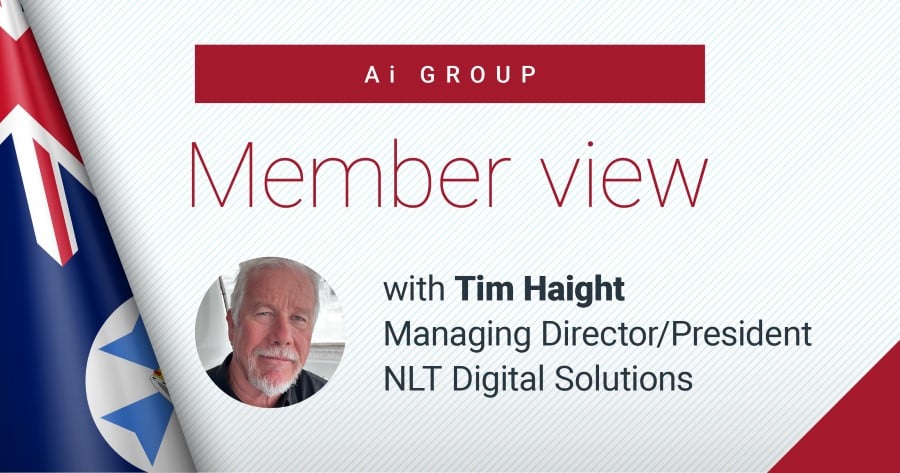
Tim Haight has had no choice but to recruit from overseas to plug the skills gaps in his workforce.
The Sunshine Coast-based businessman, whose tech business, NLT Digital Solutions, manufactures and deploys IT networks and software products in mines and tunnels around the world, shared his frustration with the challenges that stand in the way of developing a business in Australia.
“In the past two years, we doubled both our revenue and workforce, but access to skilled labour is still hideously deficient,” Mr Haight said.
“We’ve had no choice but to look overseas.
“Our Corporate General Manager is from South Africa, and we’ve also got people from South America, the Philippines and France.”
“The universities want to partner with you to provide a pipeline into your business, and I'm all for that,” he said.
“Unfortunately, it takes two or three years to get someone up to the speed where you can rely on them.
“So, we've had to do both — bring skilled people into the business, as well as train and skill up the people we already have.”
The apprenticeship system is not fit for purpose, Mr Haight says.
“We have highly capable technicians designing and manufacturing electronics alongside engineers and electricians, but they’re not qualified,” he said.
“They are often every bit as skilled as qualified electricians and engineers and, in some cases, more qualified when it comes to the needs of our business.
“We’ve had to hire tradespeople who often don't know what the other guys know, yet they sometimes find they are in charge and responsible for signing off on things etc.
“This is a common issue: a lot of businesses have mature trades assistants who know 95 per cent of what they need to know but just need to complete that final portion of ‘book learning’.
“The only way they can do that is to go to TAFE and start as a first-year apprentice.
“How do you tell someone who’s 30 years old or older that they're going to have to go back and start with the 15 and 16-year-olds in the first year of their trade?
“Affordability is another issue. They would have to go from earning $30-$35 an hour to $16 an hour as an apprentice. Are they going to do that? Not likely.
“And how do we afford it, as a business? We’ve got to take them out of production and send them to ‘school’ for the duration of their TAFE learning.
“We have to pay for that and backfill our production, because now our production is down a person or two.
“Along with meaningful funding assistance, a program to better and more quickly assess the skills of unqualified technicians would go far to address the skills gap and increase the supply of qualified tradespeople.
“The government needs to work with industry to make that happen.”
Payroll tax, set by each state, is a major frustration for employers, Mr Haight said.
“The more people you employ, the more you pay in payroll tax,” he said.
“This is senseless and only serves to push businesses to manufacture offshore, where it’s cheaper.
“However, I want to see our business grow in Australia. I want to employ people in my community in Queensland and grow this business here, not overseas.
“Countless other companies would say the same thing.”
“The government has to take a hard look at what it’s doing in the areas I’ve raised: skills shortages and issues such as payroll tax and the lack of incentive to employers to develop their businesses in Australia.
“Here, we shoot people in the foot and say OK, now let's see you run that marathon.
“Everybody has been screaming about skills since COVID hit.
“Skilled migration only goes so far; if we want to move to the next level, we've got to do something radically different.
“There has been a lack of focus on employers for a number of years, and it's about due, I think.”
Tim Haight spoke to Ai Group Communications Manager Wendy Larter




